275 Years of University Library: A Library Migrates Locations and emergency shelters in pictures
In the 275-year history of our University Library, there have been many moves and numerous locations: From the first address on Bohlweg in the Collegium Carolinum in 1748, to the move into the newly constructed Historic Main Building in 1877 and the numerous emergency shelters after the Second World War, to the move into the current library building on Pockelsstraße at Universitätsplatz in 1971.
The year 1748 is considered the founding year of today’s University Library (UB) of Technische Universität Braunschweig. This makes it one of the oldest libraries at technical universities and this year it celebrates its 275th birthday. Our picture gallery with historical photos shows, among other things, the changing locations.
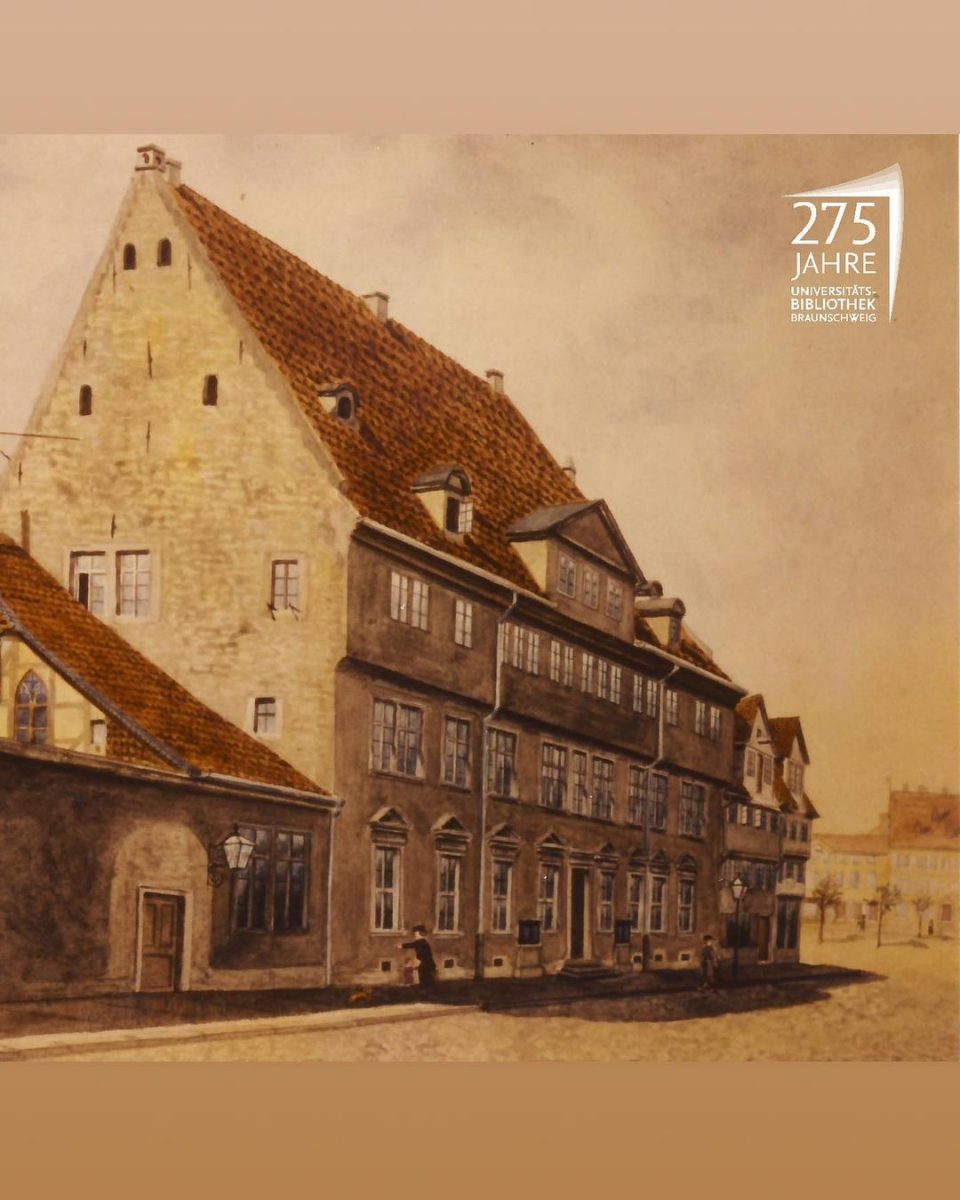
In our historical picture gallery we travel back to the beginning of the University Library. Three years after the foundation of the Collegium Carolinum, a library room was set up in the main building in 1748. At that time, the university was still located at Bohlweg, corner of Hagenmarkt. It was a 120 m² room with three window openings, which was poorly lit and offered little opportunity for ventilation. Picture credit: Braunschweig University Archive
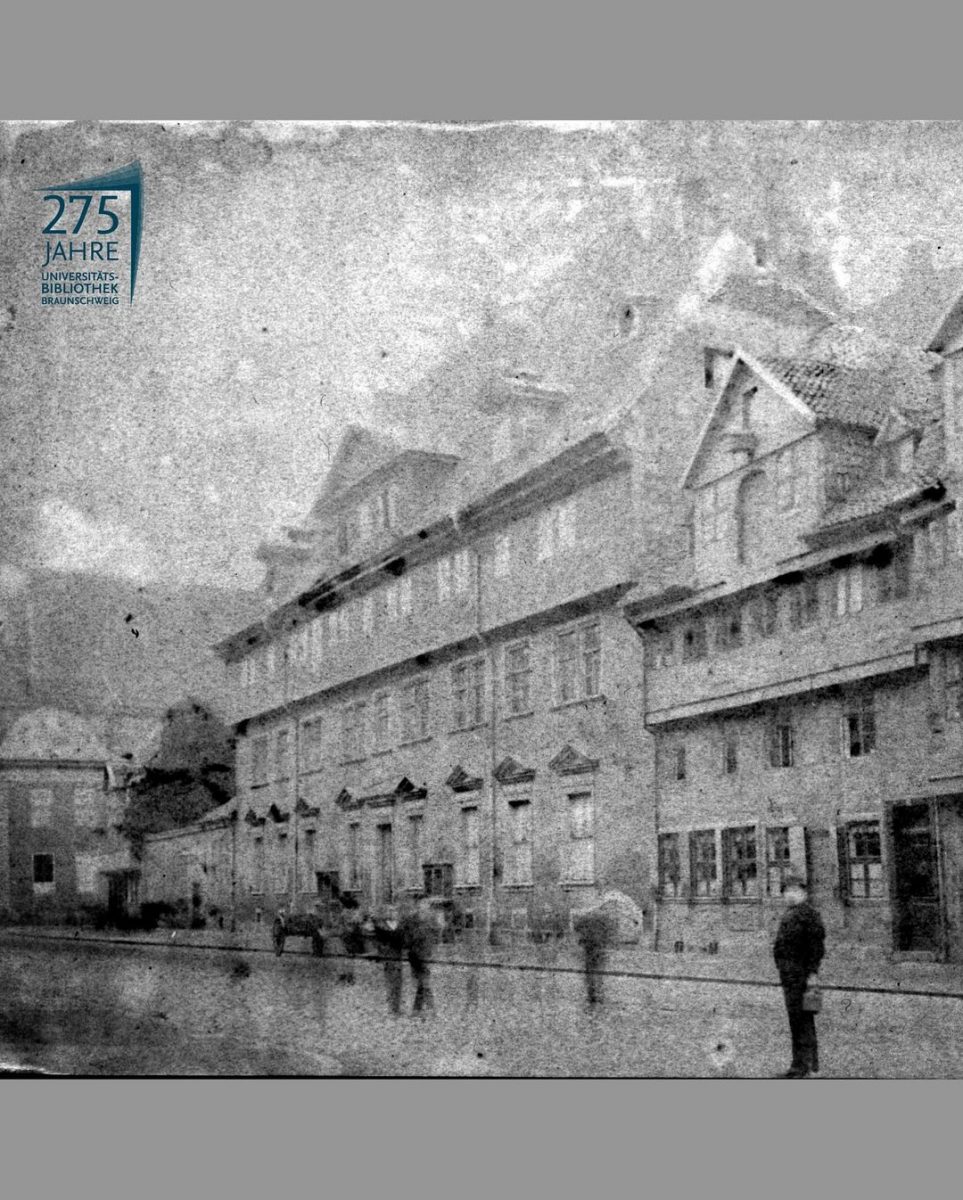
The librarian in office at the time was Professor Johann Wilhelm Seidler. He received ducal instructions from Carl I to begin library work on 18 May 1748. This date is considered the founding date of the library. Photo credit: University Archive/TU Braunschweig
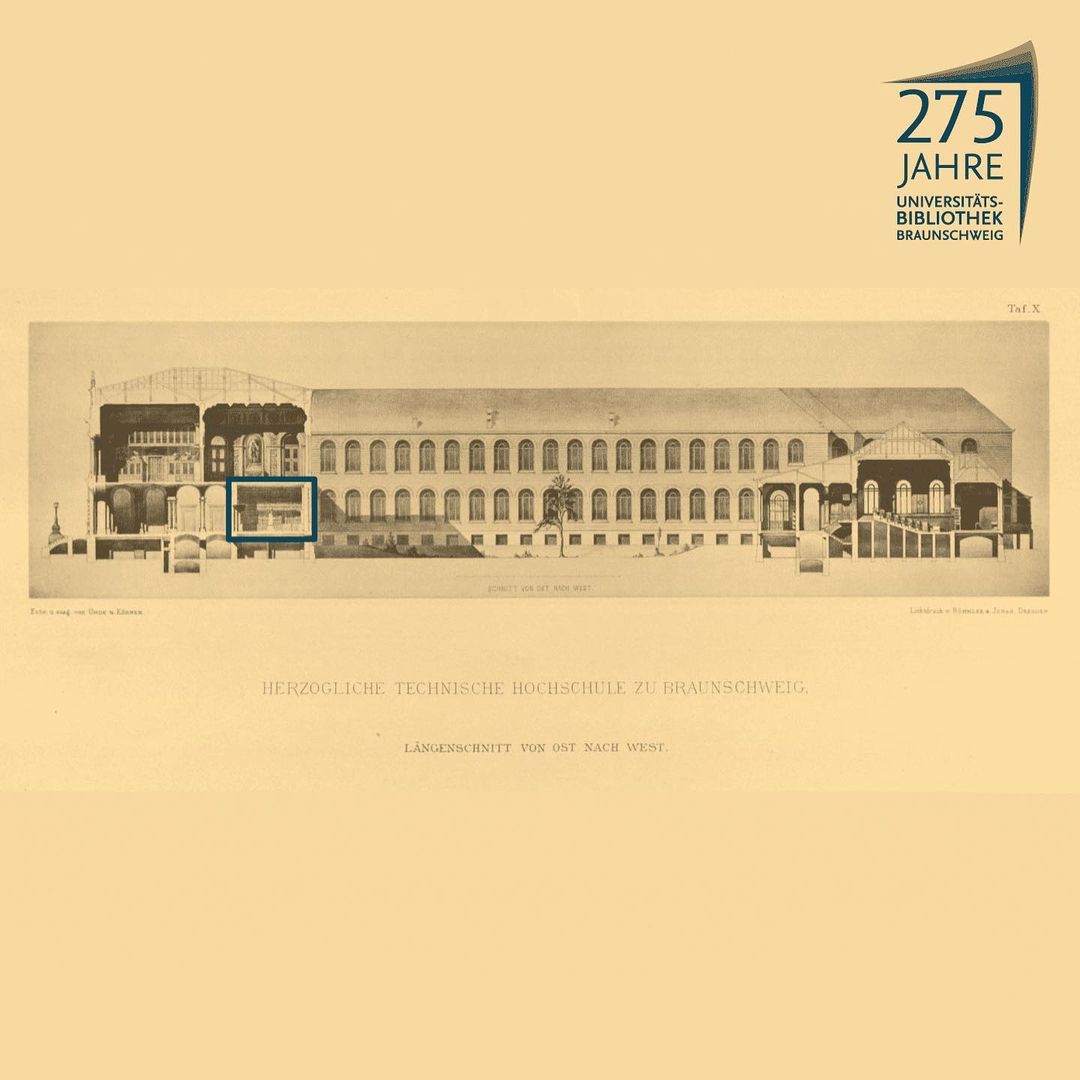
On 16 October 1877, the library moved into the then newly built Historic Main Building on today's Universitätsplatz. There was more space for the collections and also a reading room for professors and students. The cross-section shows the entrance door and the location of the library in the building of the then Technische Hochschule. Picture credit: Braunschweig University Archive

Initially, students had to pay 3 marks per semester to use the library. In 1944, the library rooms were completely destroyed in a bombing raid. Everything that was not in the protected basement was completely destroyed, including the patent collection and a large part of the dissertations from outside Braunschweig. Fortunately, only 7 % of the holdings were destroyed during the Second World War. About 100,000 volumes were brought to safety in surrounding places. Photo credit: Braunschweig University Archive
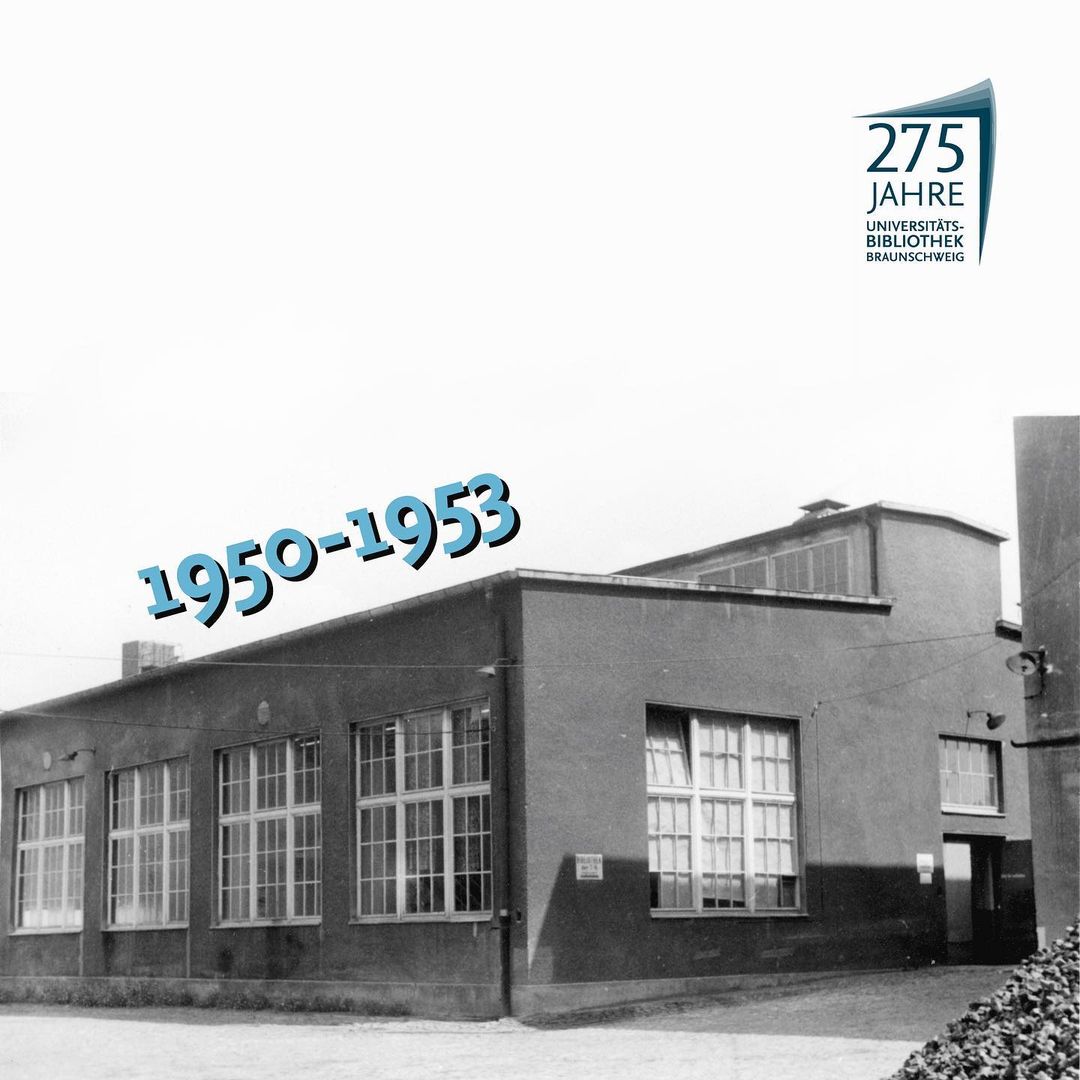
After the destruction of the Historic Main Building in the 2nd World War, the University Library and its holdings were housed in numerous emergency shelters. From 1950 to 1953, the University Library moved into a reading room with 25 workstations and the catalogue in a factory building of Brunsviga Rechenmaschinen on Hamburger Straße. The factory hall had an area of 700m² and a reading room with 25 workstations. For the first time in a long time, all volumes could be placed in the two-storey stacks and an instant lending service could be set up. Today, a shopping centre is located on the site. Photo credit: University Archive/TU Braunschweig
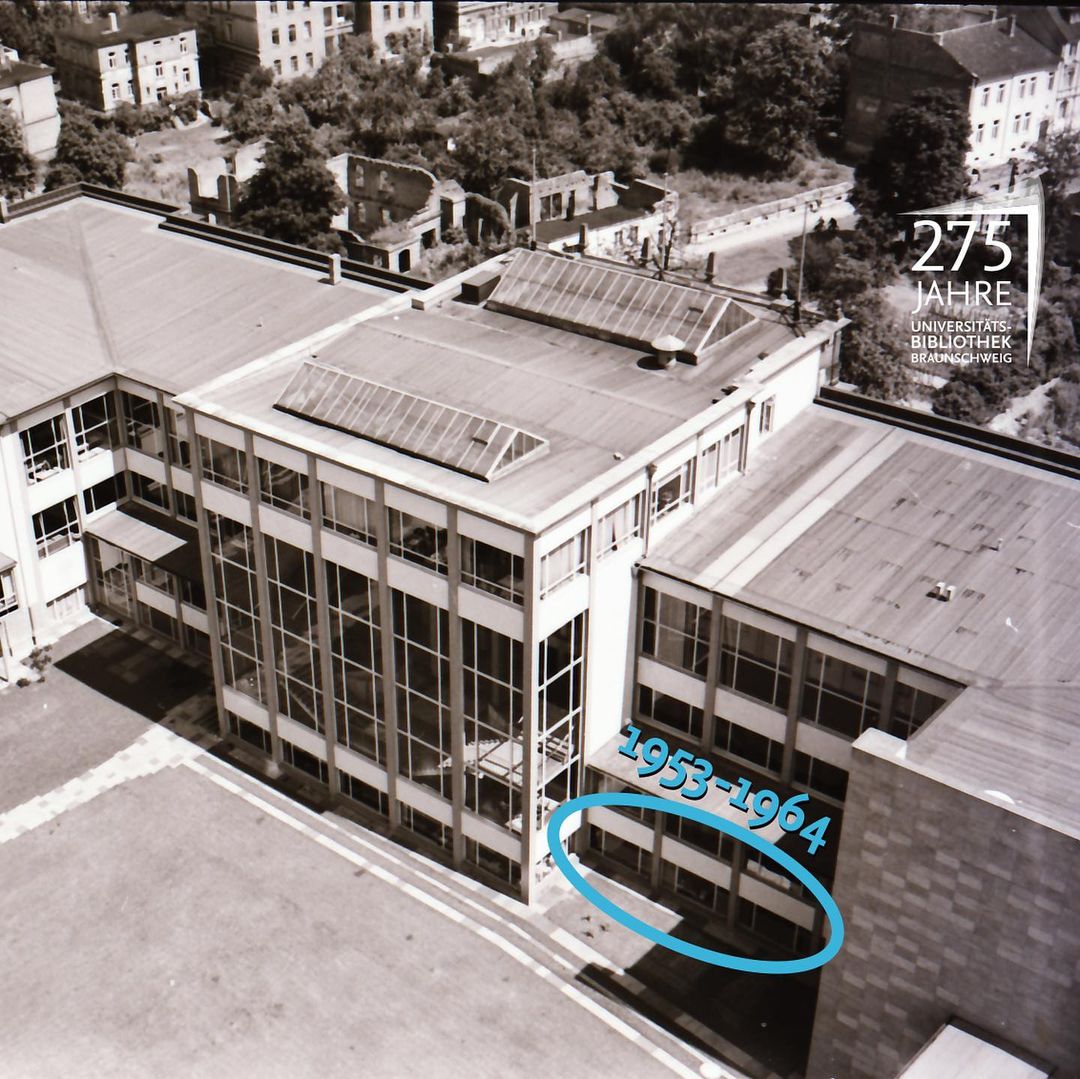
From 1953 to 1964, the reading rooms and collections moved to the basement of the Historic Main Building in Pockelsstraße. Photo credit: Henry Fiebig/TU Braunschweig
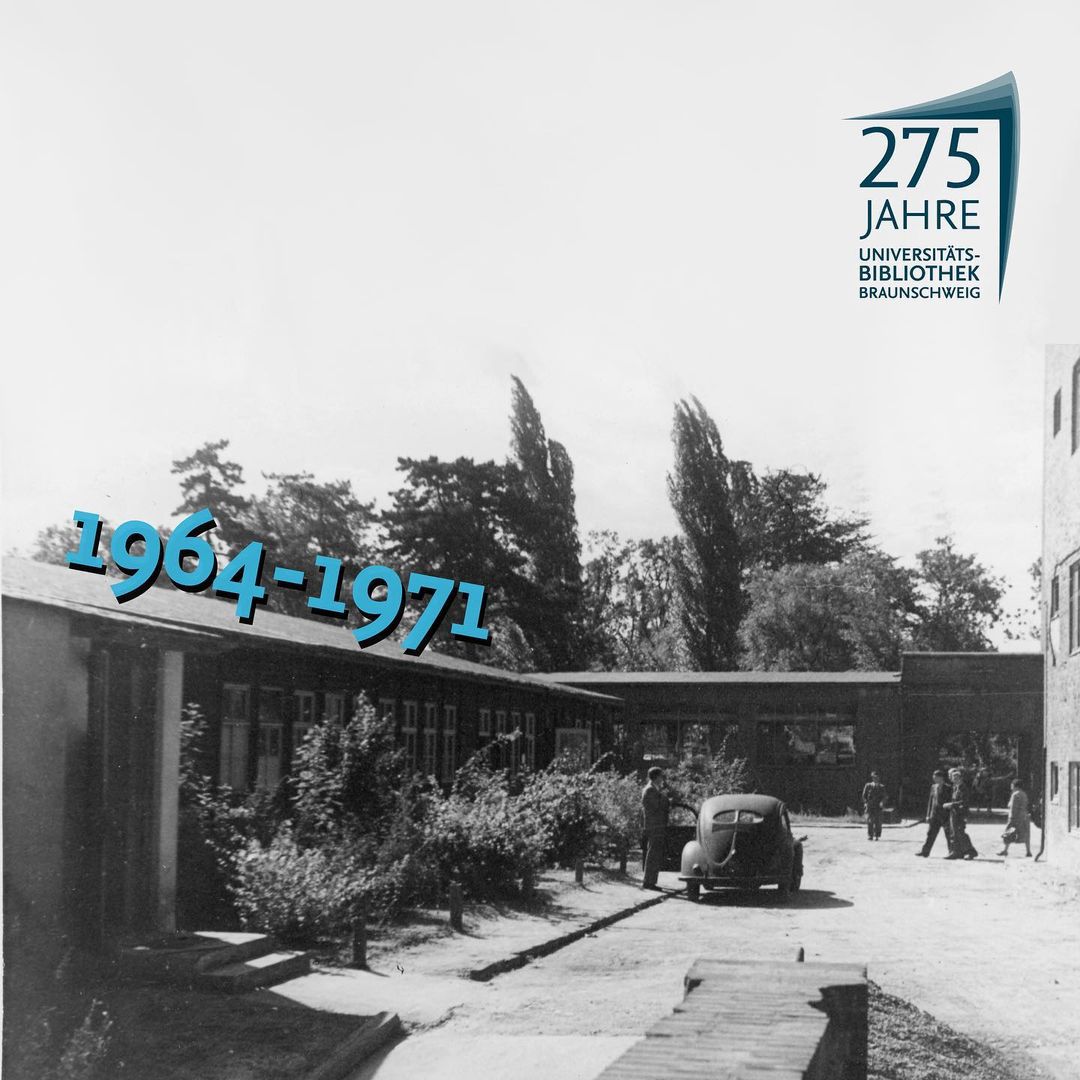
Another move followed. From 1964 to 1971, the reading rooms moved into the former rector's barracks behind the Historic Main Building on Schleinitzstraße. Photo credit: University Archive/TU Braunschweig
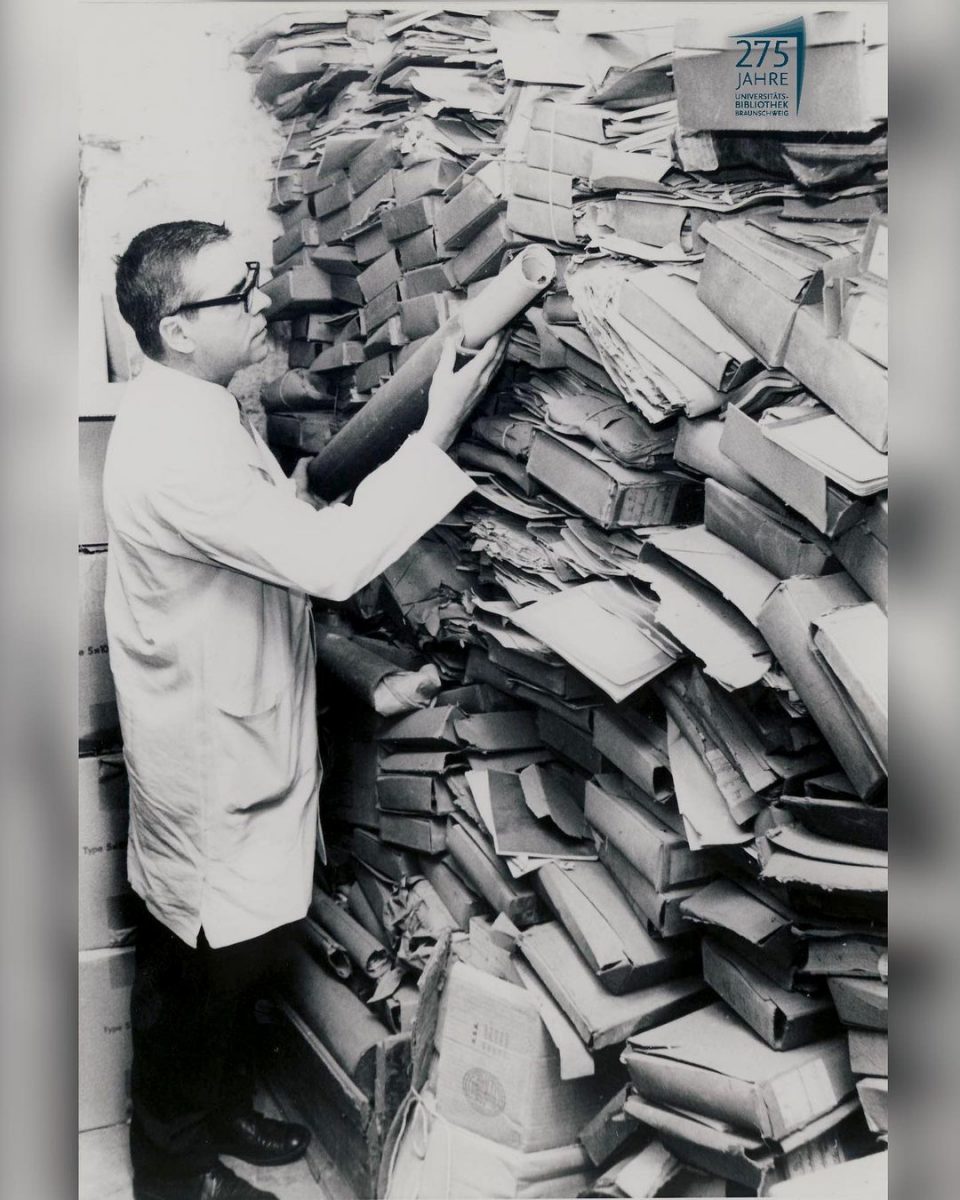
In the picture from 1969, the then library director Dr. Josef Daum can be seen inspecting the not quite professional, but space-saving storage of the archive holdings. At this point, however, there were already signs of an improvement in the situation, as plans were already underway for a library building of its own. Photo credit: Braunschweig University Archive
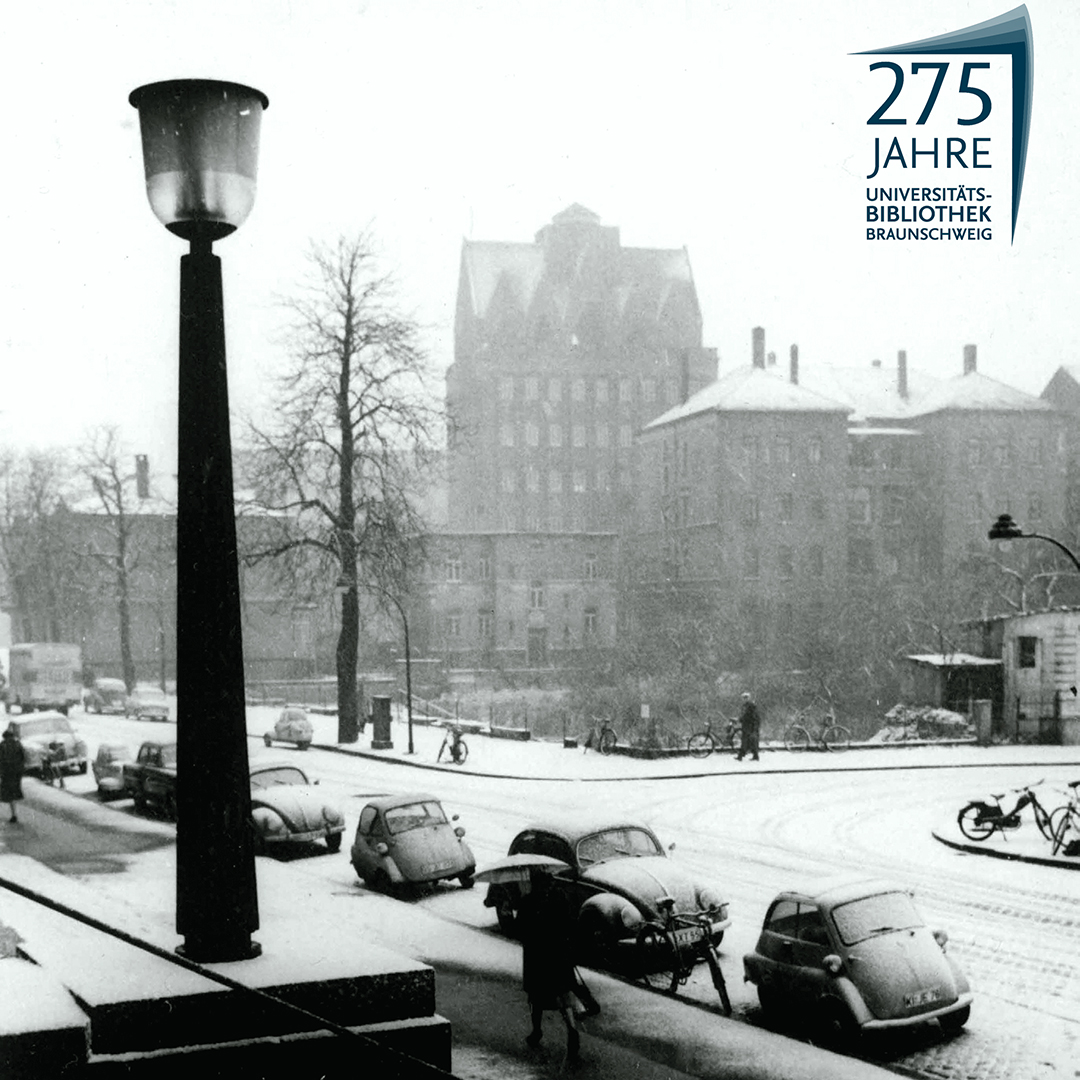
The view from the Historic Main Building towards the Haus der Wissenschaft shows that the space for the library building has already been created. It will still be a few years before it is completed in 1971. When the picture was taken, it was still possible to turn right from Pockelsstraße into Spielmannstraße. Later, today's Universitätsplatz was built here. Photo credit: Braunschweig City Archive
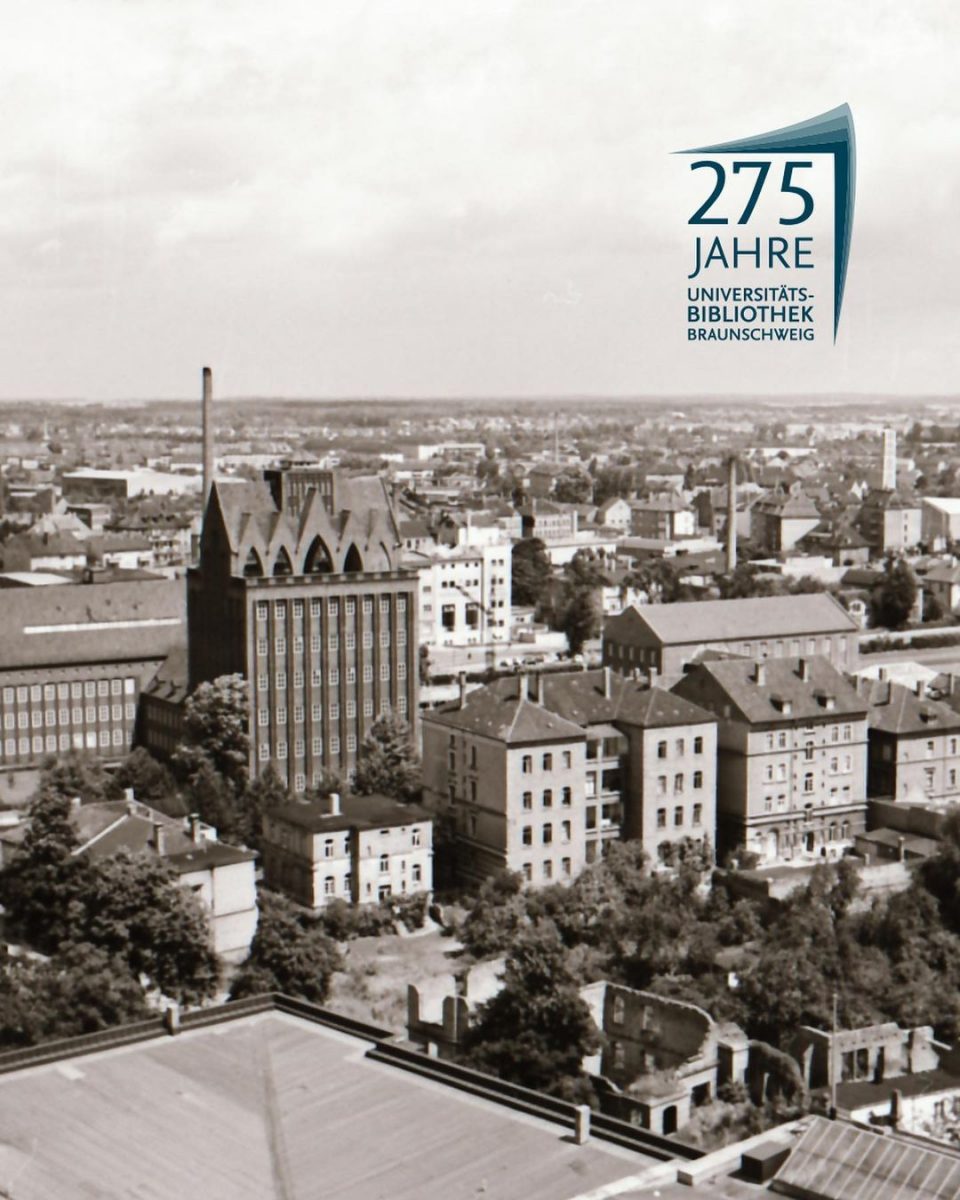
A view from the Okerhochhaus in 1957 shows where today's University Library stands, there were only post-war ruins. Photo credit: Henry Fiebig/TU Braunschweig

The same view as in the picture from 1957 of the Okerhochhaus shows what it will look like after the library building has been built. Photo credit: Henry Fiebig/TU Braunschweig
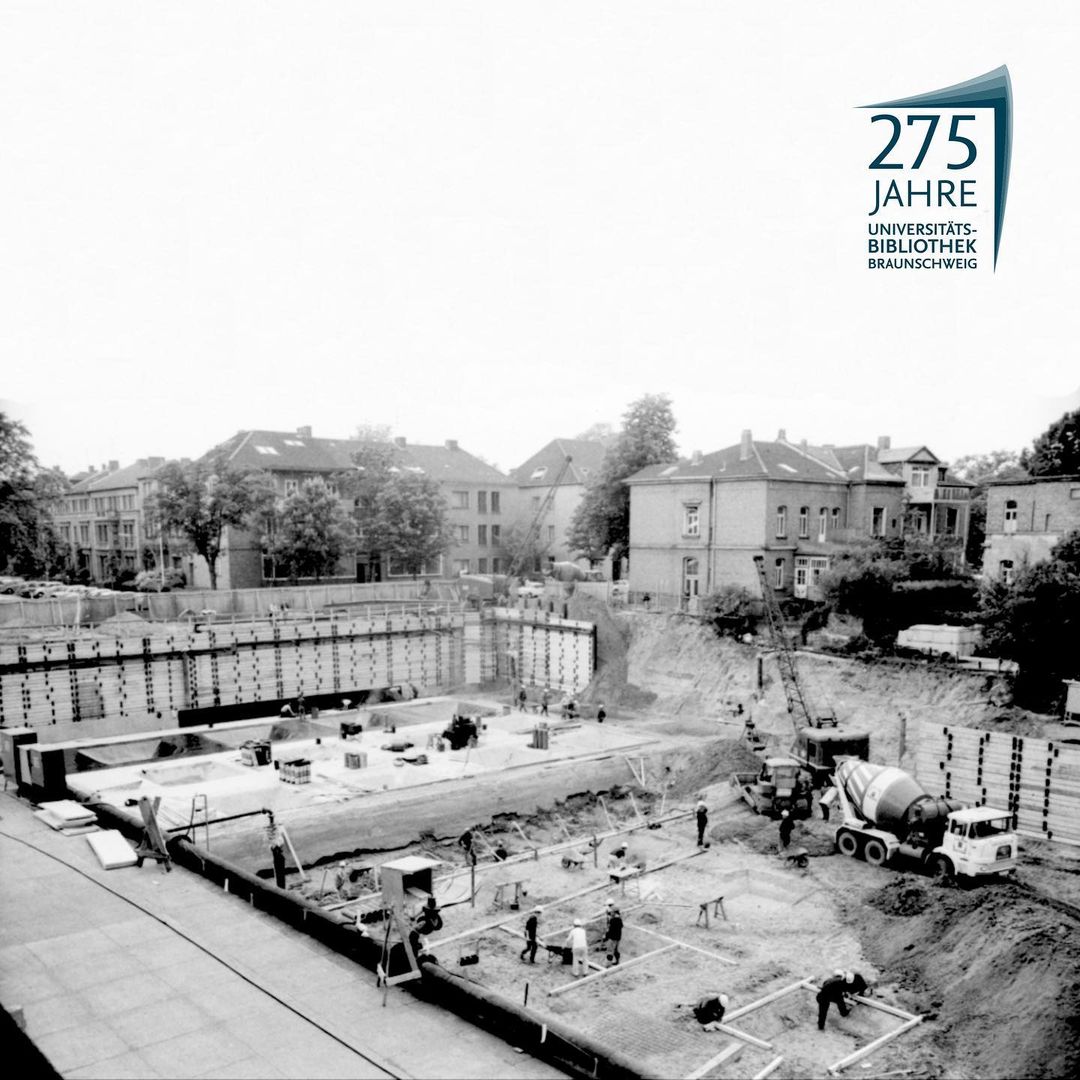
Impression of the large construction site of the present library building. Photo credit: Braunschweig City Archive
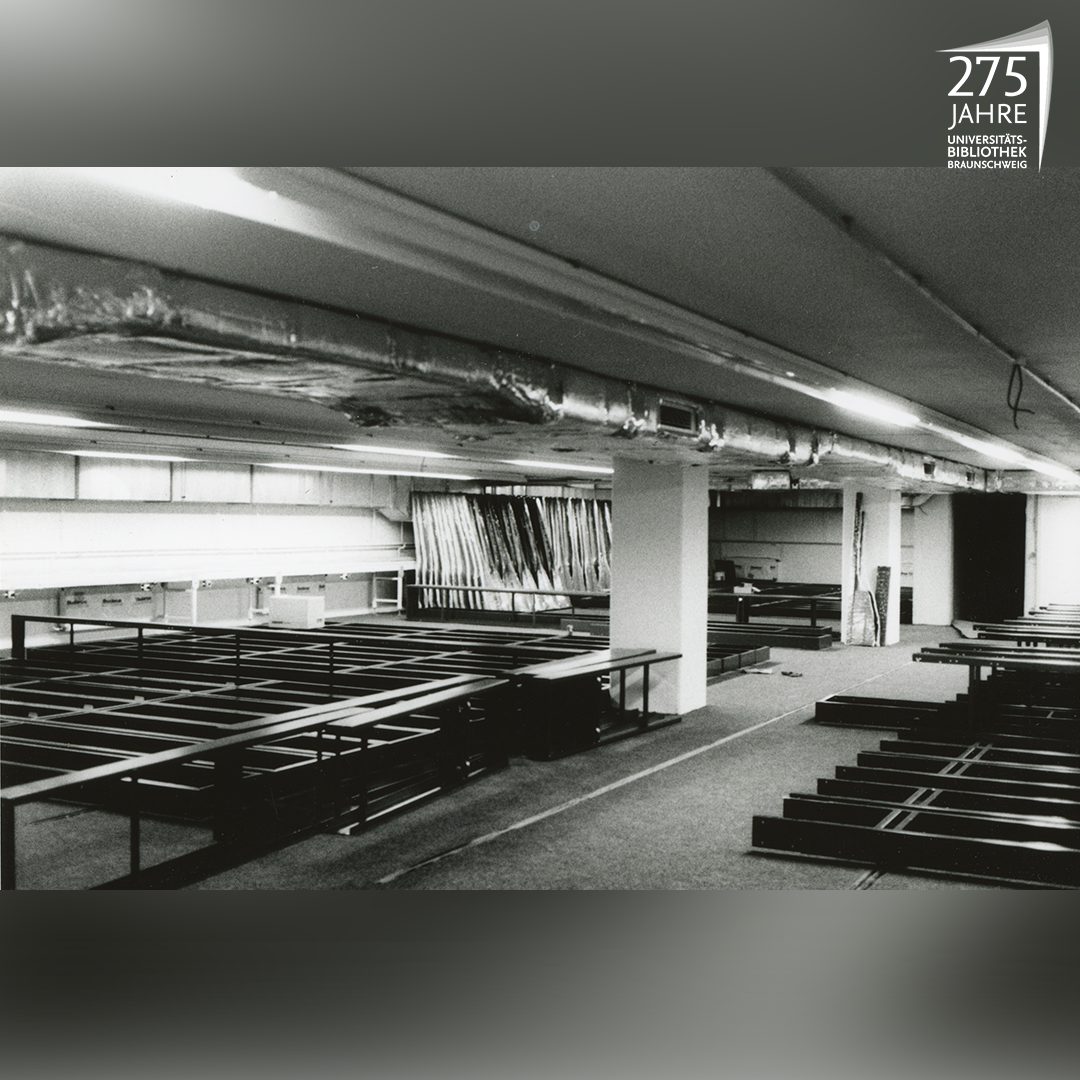
A view of the UB's stacks, which, like the rest of the library, were soon bursting at the seams due to the steadily growing number of users and book collections. Therefore, an extension was necessary, which was begun in 1993 and in which, among other things, today's open access stacks were set up. Space-saving compact shelving was installed in the newly created stacks, and there was more room for workstations and books in the reading rooms: the staff at the time had re-stacked around one million books. Photo credit: Braunschweig University Archive

In 1971, the library was finally able to move into its own building. In total, the library had a usable area of 8000m² in the new building. Approximately 400,000 volumes were brought together from seven different storage locations and the building was inaugurated with a ceremony on 7 February 1972. Photo credit: Michael Wrehde/TU Braunschweig
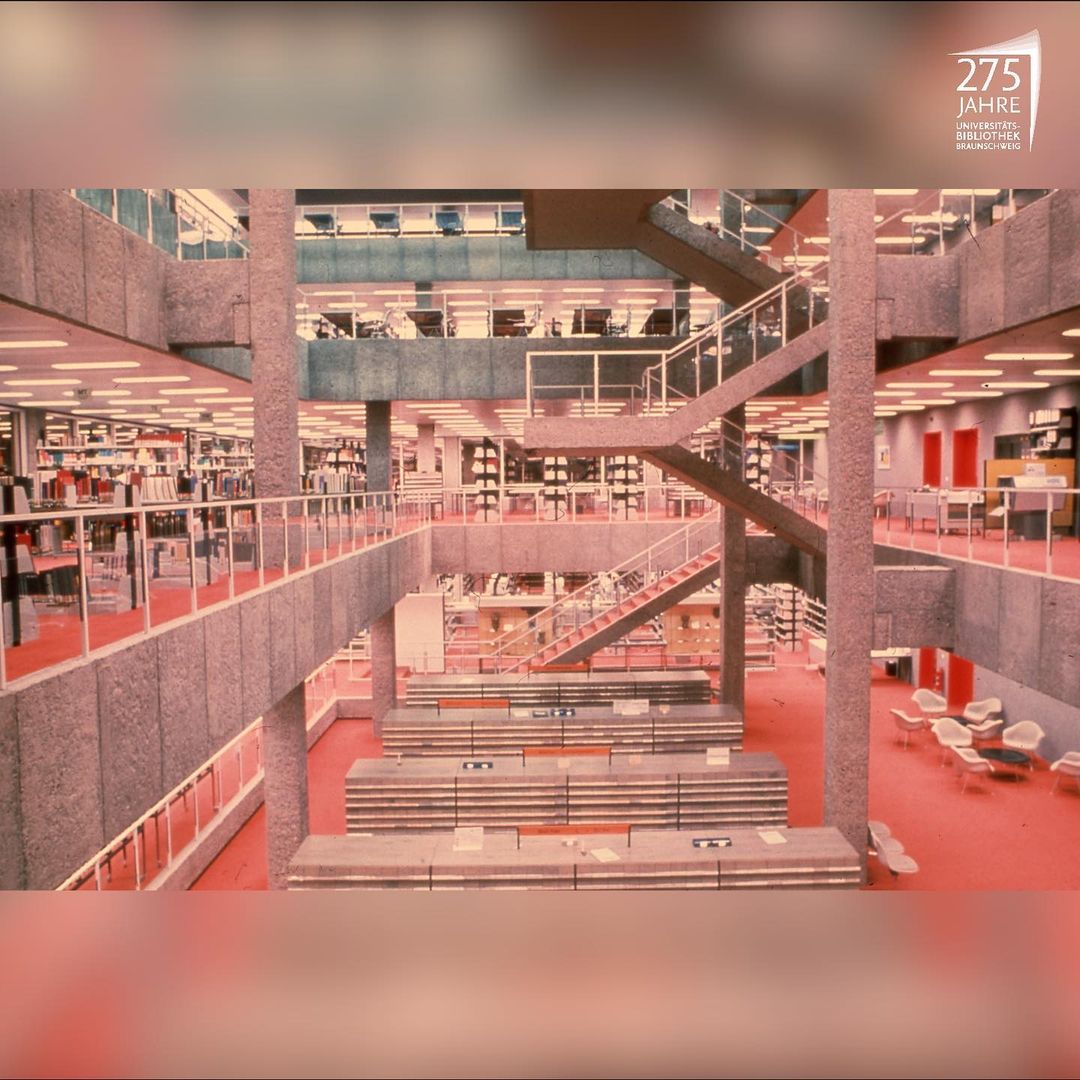
In the new library building, the UB had a storage capacity for 600,000 volumes, reading rooms on three floors as we know them today, and 350 workplaces at that time. Photo credit: Braunschweig University Archive
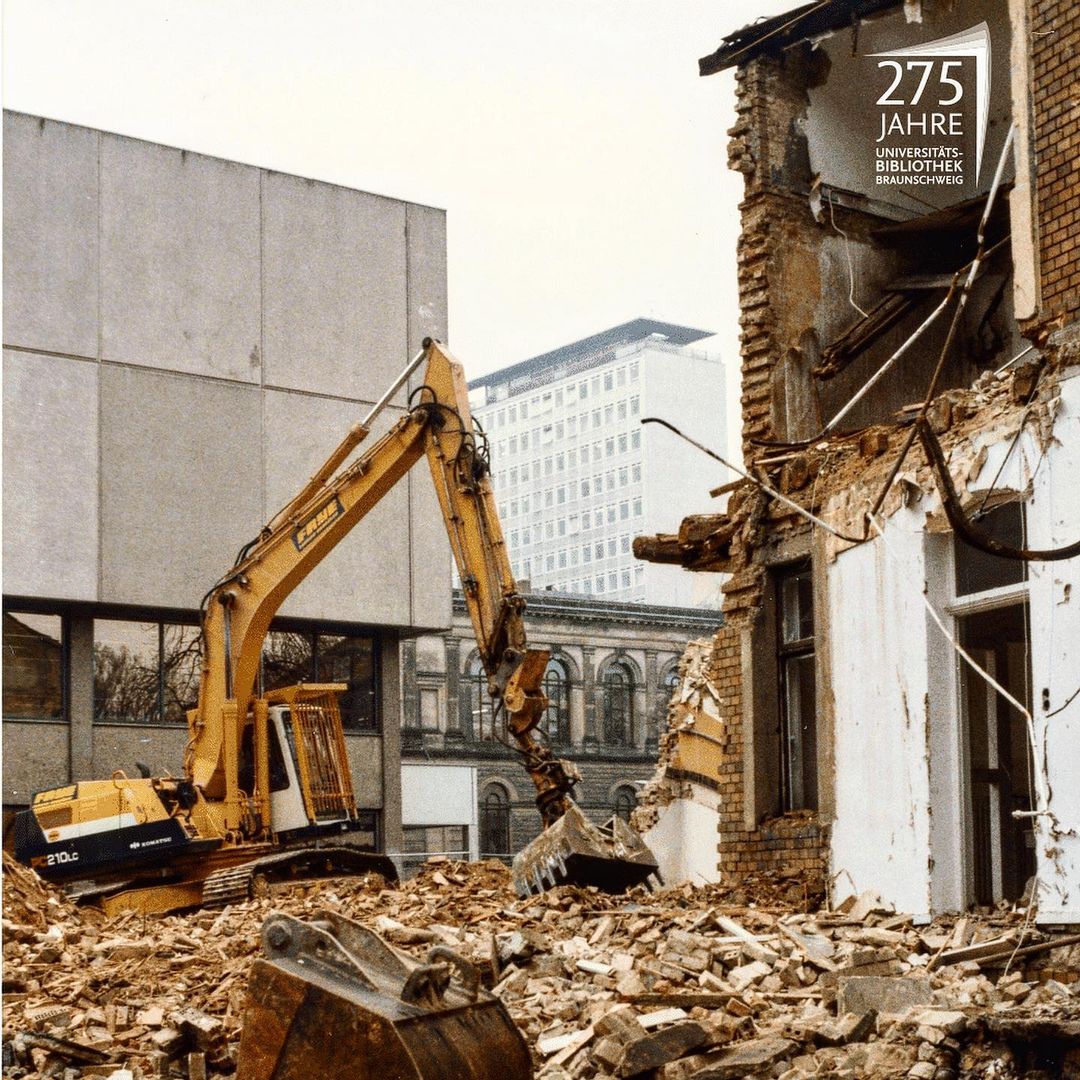
Between 1993 and 1997, work began on the extension to the library building. The excavator demolition began in March 1993. The extension with a main usable area of 4,300 m² had already been planned since the beginning of the 1980s, as the number of students was steadily increasing. Two residential buildings owned by TU Braunschweig had to be demolished for the extension. Photo credit: Braunschweig University Archive
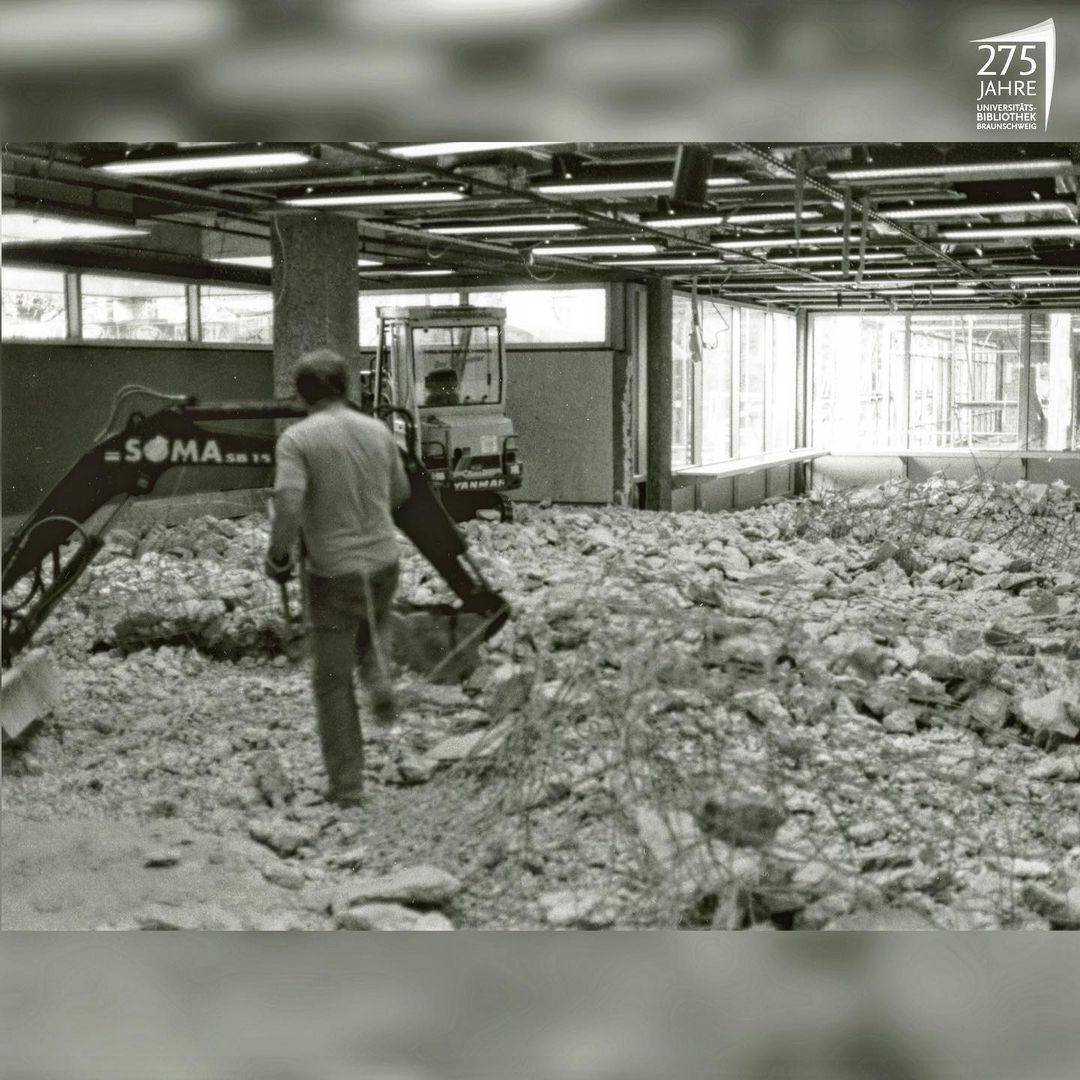
The construction work was carried out while the library building was in operation. The only time the library building was not accessible in the morning was when a compact excavator with a hydraulic hammer was crushing a concrete platform on the ground floor, as can be seen here in the picture. Photo credit: Braunschweig University Archive
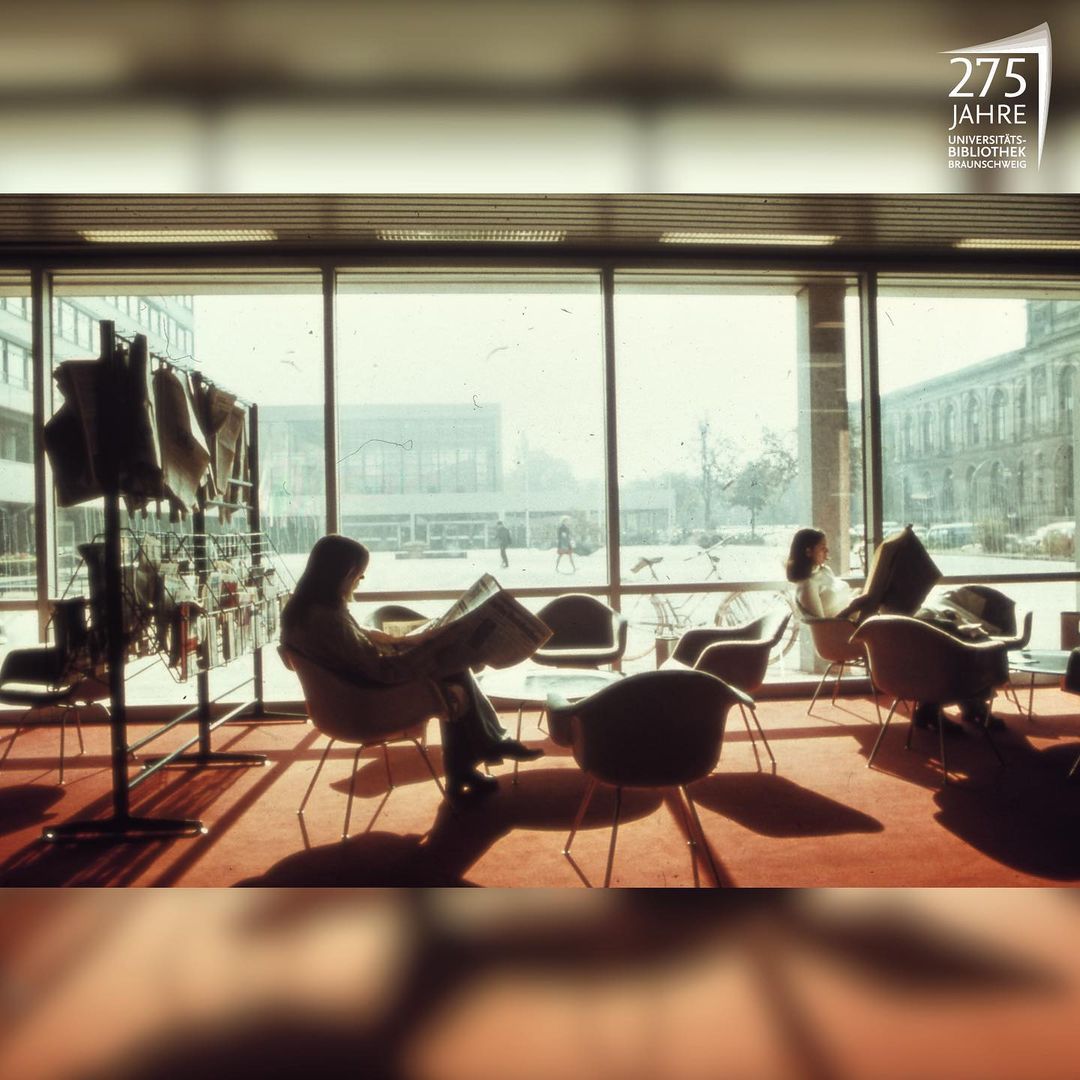
Facing Universitätsplatz, the newspaper corner used to be located next to the main entrance of the University Library. There, users could inform themselves about current world events in the newspapers displayed there. From 1972 to 1982, there was also a bookshop on the ground floor next to the main entrance of the University Library, where paperbacks and textbooks were offered for sale. After 1982, the bookshop was used as a photocopying office. Photo credit: Braunschweig University Archive
